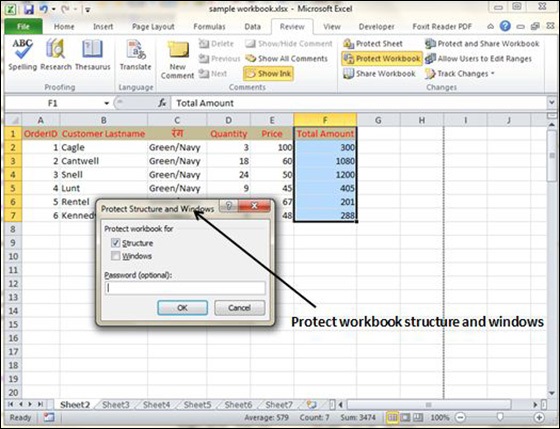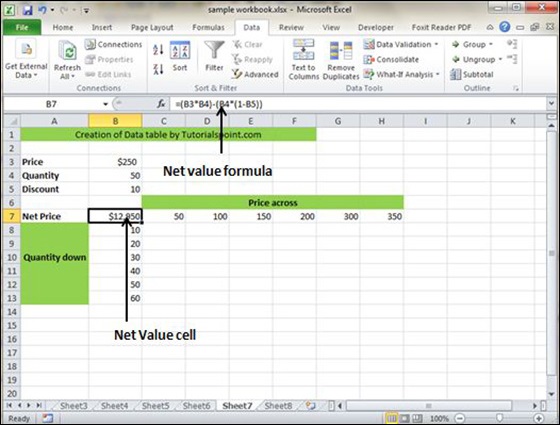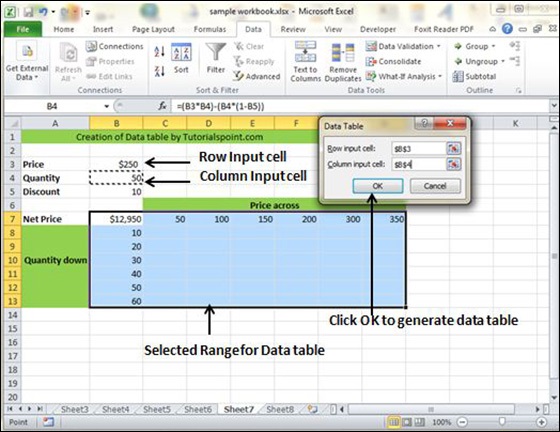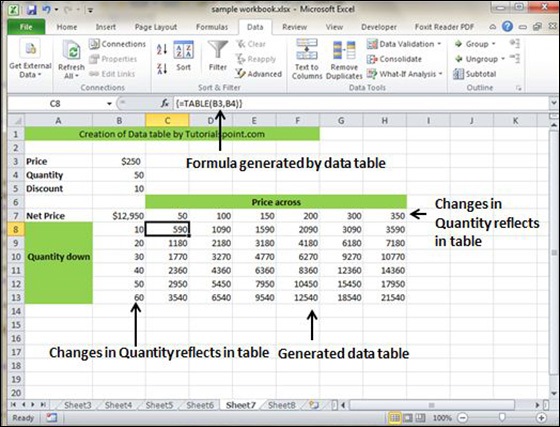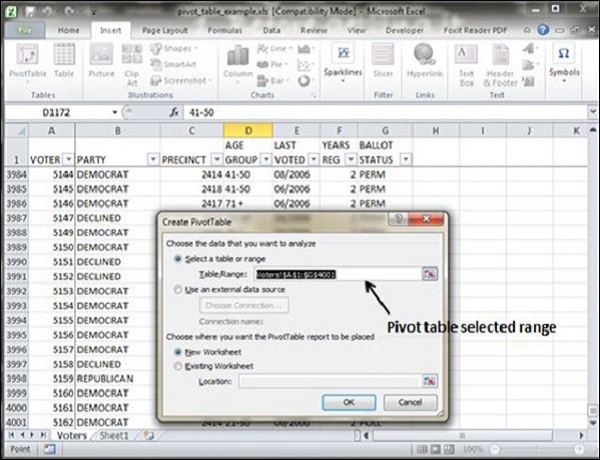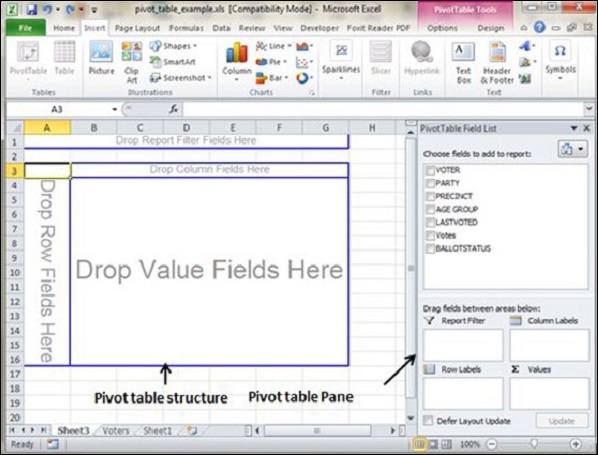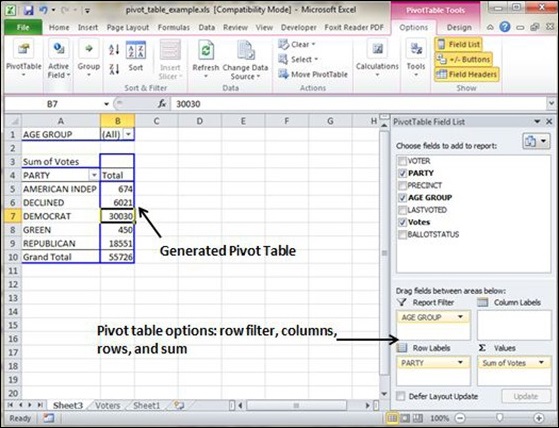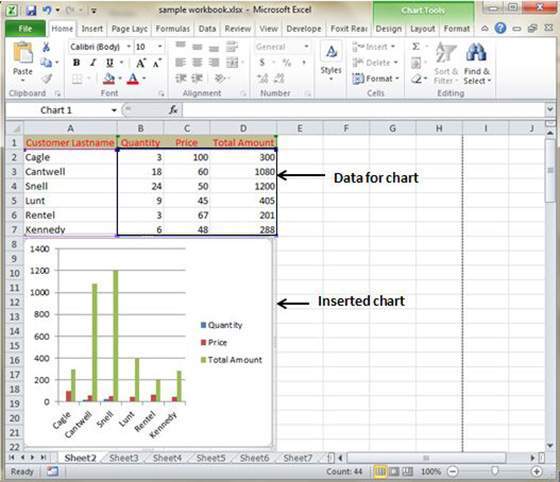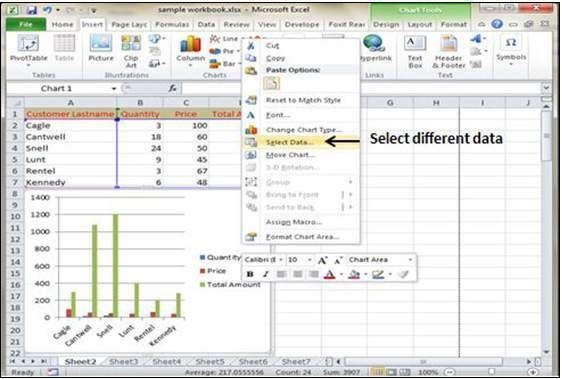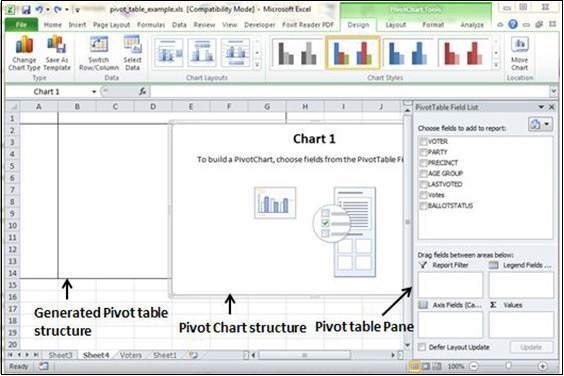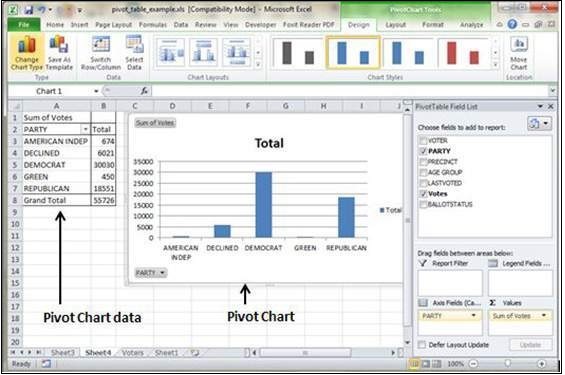Performance
analysis and behavioural aspects
1. Using variance analysis
1.1 Analysing past performance with variance analysis: Variance
analysis compares actual performance with a budget or standard cost.
Differences between actual results and the budget or standard are reported in
monetary terms as variances, and variances can be used to reconcile budgeted
profit and actual profit in an operating statement. For the exam, you also need
to show an awareness of what variances tell us, and what control measures
management should take when a variance is reported. Basic principles of
variance reporting are that:
(a) The monetary value that is given to variances should be
a reasonable indication of how much
profit has been made or lost as a result of actual performance differing
from the budget or standard.
(b) The managers
responsible for variances (adverse or favourable) should be identified, and
they should be expected to account for the variance and, where appropriate,
indicate what corrective or control measures they are taking.
1.1.1 Responsibility for planning variances: It was
explained in the previous chapter that planning variances arise when a budget
or standard cost is revised. 'Errors' in the budget or standard cost are
attributable to the managers (planners) who prepared the budget or standard
cost. Variances arising because the budget or standard cost was inappropriate
should not be attributed to operational management.
In many cases, revisions to a budget or standard cost are
due to causes outside the control of the planners. An unexpected increase in
the market price for materials, for example, is beyond the control of planners.
Similarly, an unexpected collapse in market demand for an industry's products,
resulting in an adverse sales volume planning variance, cannot usually be
'blamed' on planners.
Even so, planning variances, where they occur, should be
identified separately. Operational managers should be held responsible only for
variances that may be realistically attributable to differences between actual
performance and a realistic budget or standard. In other words, operational
managers should be held responsible for operational variances. Unless they were
also involved in the budgeting or standard- setting process, operational
managers are not responsible for planning variances.
1.1.2 Responsibility for operational variances: Responsibility
for operational variances should be traced to the managers who are in a
position of authority and control over operations where the variances occur.
Operational management responsibility for variances depends on the organisation
structure and the division of authority and responsibility between management.
For example, a material price variance is the difference
between actual and standard purchase costs of materials. The operational
manager responsible for this variance should be the manager who makes the
decisions about buying materials. This may be the head of buying in one
organisation, and the production manager in a different organisation.
You should be able to identify the managers responsible for
operational variances. A general guide is given in the table below.
|
Variance
|
Responsibility
|
|
Sales price variance
|
Sales or marketing management
|
|
Sales volume variance
|
Normally sales or marketing management
However, if sales are less than budget due to problems with
production, the production manager is responsible
|
|
Material price variance
|
The manager responsible for purchasing materials
|
|
Material usage variance
|
Normally the production manager
|
|
Labour rate variance
|
The manager responsible for pay rates. This may be senior management
or Human Resources management. However, the production manager will be
responsible for any adverse rate variances caused by working overtime and
paying employees a premium rate per hour
|
|
Labour efficiency variance
|
Normally the production manager
|
|
Idle time variance
|
This depends on the cause of the idle time. It may be caused by lack
of sales orders (sales management responsibility), inefficient production
management (production management responsibility) or delays in deliveries of
key raw material (buying manager responsibility)
|
1.2 Using variance analysis to improve future performance:
Variance analysis is not simply a method of analysing past performance. It
should provide guidance for operational management about aspects of performance
that need improving. Variances should be a guide to control action and
improving future performance.
It is important to understand that a reported variance is a
measurement that relates to historical performance. Control action affects the
future, not the past. So, for example, if an adverse labour efficiency variance
of $10,000 is reported one month, and the production manager takes measures to
improve efficiency:
(a) The effect of the control measures should be to improve
efficiency, but the value of the efficiency improvement in future months is
unlikely to be $10,000. Control measures may result in savings of more or less
than $10,000 per month, depending on how effective the measures are.
(b) The effect of control measures should have a reasonably
long-term impact, so control measures may result in savings not just in the
following control period but also for a reasonably long time into the future.
1.2.1 The significance of variances: Control action
to improve future performance should only be taken when a variance seems
significant. Some variances are inevitable, because it is most unlikely that
actual results will be exactly the same as the budget or standard.
(a) Favourable as well as adverse variances should be
investigated, with a view to taking control action if they seem significant.
Control action to improve poor performance may seem an obvious requirement.
However, control action to reinforce favourable performance should also be expected
from management.
(b) Variances need not be investigated if they do not seem
significant. For example, variances that are less than, say, 5% of the budget
or standard cost amount may be disregarded, because they fall within an
acceptable tolerance limit.
(c) Management may not use variances in a single reporting
period as a guide to control action, since a variance in one month may be due
to a once-only event. Instead of relying on variances reported in a single
month, management may monitor cumulative variances over a period of time, and
identify those that should be investigated on the basis of performance or trend
over a number of months.
1.2.2 The cost of control action: Taking control
measures to deal with the cause of a variance takes effort and costs money.
Control measures should only be taken if it seems probable that the benefits
arising from improved performance are sufficient to justify the cost of
investigating the causes of the variance and taking control action. This
is a reason why insignificant variances are not investigated.
1.2.3 Improving performance: An exam question may ask
about the nature of control action that an operational manager may take to deal
with the cause of an adverse variance and so improve performance. The
appropriate control measures will obviously depend on the circumstances and the
reasons why a variance occurred, so you may need to use common sense and
judgement in dealing with any question on this topic. A few ideas are set out
in the following table to give you an idea of the issues that may be
considered.
|
Variance
|
Possible control action
|
|
Adverse sales volume variance
|
Consider reducing the sales price in order to increase sales demand,
although this will result in an adverse sale price variance
|
|
Adverse material price variance
|
Search for a supplier who is prepared to offer a lower price
Consider purchasing in bulk quantities in order to obtain large-order
discounts
|
|
Adverse material usage variance
Adverse labour efficiency variance
|
Consider providing training for the workforce, with the objective of
improving labour efficiency and reducing wastage of materials
|
2. Behavioural implications: Used correctly, a
budgetary control and variance reporting system can motivate managers
and employees to improve performance, but it may also produce undesirable negative
reactions.
The purpose of a budgetary control and variance reporting
system is to assist management in planning and controlling the resources of
their organisation, by providing appropriate control information. The
information will only be valuable, however, if it is interpreted correctly and
used purposefully by managers and employees.
The appropriate use of control information therefore depends
not only on the content of the information itself but also on the behaviour of
its recipients. This is because control in business is exercised by people.
Their attitude to control information will colour their views on what they
should do with it and a number of behavioural problems can arise.
(a) The managers who
set the budget or standards are often
not the managers who are then made responsible
for achieving budget targets.
(b) The goals of the
organisation as a whole, as expressed in a budget, may not coincide with the personal aspirations of individual managers.
(c) Control is
applied at different stages by different people. A supervisor may receive
weekly control reports, and act on them; their superior may receive monthly
control reports, and decide to take different control action. Different
managers can get in each other's way, and resent the interference from others.
2.1 Motivation: Motivation is what makes people
behave in the way that they do. It comes from individual attitudes, or group
attitudes. Individuals will be motivated by personal desires and interests.
These may be in line with the objectives of the organisation, and some people
'live for their jobs'. Other individuals see their job as a chore, and their
motivations will be unrelated to the objectives of the organisation they work
for.
It is therefore vital that the goals of management and the
employees harmonise with the goals of the organisation as a whole. This is
known as goal congruence. Although obtaining goal congruence is essentially a
behavioural problem, it is possible to
design and run a budgetary control system which will go some way towards
ensuring that goal congruence is achieved. Managers and employees must
therefore be favourably disposed towards the budgetary control system so that
it can operate efficiently.
The management accountant should therefore try to ensure
that employees have positive attitudes towards setting budgets, implementing budgets (that is, putting the
organisation's plans into practice) and feedback of results (control information).
2.2 Poor attitudes when setting budgets: Poor
attitudes or hostile behaviour towards the budgetary control system can begin
at the planning stage. If managers are involved in preparing a
budget the following may happen.
(a) Managers may complain
that they are too busy to spend much time on budgeting.
(b) They may build
'slack' into their expenditure estimates.
(c) They may argue that formalising
a budget plan on paper is too restricting and that managers should be
allowed flexibility in the decisions they take.
(d) They may set budgets for their budget centre and not co-ordinate their own plans with
those of other budget centres.
(e) They may base
future plans on past results, instead of using the opportunity for
formalised planning to look at alternative options and new ideas.
On the other hand, managers
may not be involved in the budgeting process. Organisational goals may not
be communicated to them and they might have their budget decided for them by
senior management or administrative decision. It is hard for people to be motivated to achieve targets set by someone else.
2.2.1 Poor attitudes when putting plans into action: Poor
attitudes also arise when a budget is
implemented.
(a) Managers may put
in only just enough effort to achieve budget targets, without trying to
beat targets.
(b) A formal budget may encourage
rigidity and discourage flexibility.
(c) Short-term
planning in a budget can draw
attention away from the longer-term consequences of decisions.
(d) There may be minimal
co-operation and communication between managers.
(e) Managers will often try to make sure that they spend up to their full budget allowance,
and do not overspend, so that they will not be accused of having asked for
too much spending allowance in the first place.
2.2.2 Poor attitudes and the use of control information: The attitude of managers towards the
accounting control information they receive might reduce the
information's effectiveness.
(a) Management
accounting control reports could well be seen as having a relatively low priority in the list of management
tasks. Managers may take the view that they have more pressing jobs on hand
than looking at routine control reports.
(b) Managers may resent
control information; they may see it as part of a system of trying to find fault with their work. This
resentment is likely to be particularly strong when budgets or standards are
imposed on managers without allowing them to participate in the budget-setting
process.
(c) If budgets are seen as pressure devices to push managers into doing better, control
reports will be resented.
(d) Managers may not
understand the information in the control reports because they are
unfamiliar with accounting terminology or principles.
(e) Managers may have a false
sense of what their objectives should be. A production manager may consider
it more important to maintain quality standards regardless of cost. They would
then dismiss adverse expenditure variances as inevitable and unavoidable.
(f) If there are
flaws in the system of recording actual costs, managers will dismiss
control information as unreliable.
(g) Control
information may be received weeks
after the end of the period to which it relates, in which case managers may
regard it as out of date and no longer useful.
(h) Managers may be held
responsible for variances outside their control.
It is therefore obvious that management accountants and
senior management should try to implement systems that are acceptable to budget
holders and which produce positive effects.
2.2.3 Pay as a motivator: Many researchers agree that
pay can be an important motivator,
when there is a formal link between higher pay (or other rewards, such as
promotion) and achieving budget targets. Individuals are likely to work harder
to achieve budget if they know that they will be rewarded for their successful
efforts. There are, however, problems with using pay as an incentive.
(a) A serious problem that can arise is that formal reward and performance evaluation
systems can encourage dysfunctional behaviour. Many investigations have
noted the tendency of managers to pad their budgets either in anticipation of
cuts by superiors or to make the subsequent variances more favourable.
Moreover, there are numerous examples of managers making decisions in response
to performance indices, even though the decisions are contrary to the wider
purposes of the organisation.
(b) The targets must be challenging but fair, otherwise
individuals will become dissatisfied. Pay
can be a demotivator as well as a motivator!
3. Setting the difficulty level for a budget: 'Aspirations' budgets can be used as targets to motivate higher levels of
performance but a budget for planning
and decision-making should be based on reasonable
expectations.
The level of difficulty in a standard cost may range from
very challenging to fairly undemanding: standard costs may be ideal, or many establish either a target or a currently attainable level of performance.
Budgets can motivate managers to achieve a high level of
performance. But how difficult should
budget targets or standard levels of efficiency be? And how might people react
to targets of differing degrees of difficulty in achievement?
(a) There is likely to be a demotivating effect where an ideal
standard of performance is set, because adverse efficiency variances will
always be reported.
(b) A low standard of
efficiency is also demotivating,
because there is no sense of achievement in attaining the required standards.
If the budgeted level of attainment is too 'loose', targets will be achieved
easily, and there will be no impetus for employees to try harder to do better
than this.
(c) A budgeted level of attainment could be the same as the level that has been
achieved in the past. Arguably, this level will be too low. It might encourage budgetary slack.
Academics have argued that each individual has a personal 'aspiration level'. This is a
level of performance, in a task with which individuals are familiar, which
individuals undertake for themselves to reach.
Individual aspirations might be much higher or much lower
than the organisation's aspirations, however. The solution might therefore be
to have two budgets.
(a) A budget for planning
and decision-making based on reasonable
expectations
(b) A budget for motivational
purposes, with more difficult
targets of performance
These two budgets might be called an 'expectations budget' and an 'aspirations
budget' respectively. Similarly, the level of difficulty in a standard cost
may vary.
|
Type of standard
|
|
|
Ideal
|
A standard of performance that assumes the highest possible level of
achievement. A desirable target, but not at all achievable at the moment.
Reported variances will always be adverse. This can be demotivating for the
managers responsible for performance.
|
|
Target
|
This is a standard cost that sets performance targets at a higher
level than is currently being achieved. However, the targets are not
unrealistic. Improvements in performance will be needed to turn adverse
variances into favourable variances. The value of target standards depends on
the strength of motivation of management to improve performance. An incentive
scheme may be needed to persuade managers to 'buy in' to the target standard.
|
|
Currently attainable
|
This standard is based on levels of performance that are currently
being achieved. They do not provide an incentive to improve performance,
although they may encourage management to avoid a deterioration in
performance.
|
|
Basic standard
|
This is an original standard that is unchanged over a long period of
time. It is used to measure trends and changes in performance standards over
time. It is not a useful type of standard for control purposes.
|
3.1 The effect of reported variances on staff action: Reported
variances, if significant and adverse, should prompt managers into taking
control action to improve performance. The success of a variance reporting
system in achieving this objective will depend on several factors.
(a) The manager who is considered responsible for the
variance should agree and accept that the cause of the variance is their
responsibility. Variances should be reported to the appropriate manager.
(b) The manager should consider the reported variance to be
'fair'. Variances should be a realistic measure. This is a reason why it is
advisable to separate planning variances from operational variances when a
budget or standard needs revision. It is also a reason why variances reported
using ideal standards may be demotivating.
(c) The manager should want to do something to deal with the
causes of the variance. Incentives and motivation are important factors.
(d) Variance should be reported in a timely manner, as soon
as reasonably practical. If a reported variance relates to events that occurred
a long time ago, managers will be reluctant to investigate them 'now' because
the variance will seem out of date.
(e) The manager must believe that the cause of the variance
is something that they are in a position to control. If a manager considers the
cause of a variance to be outside their sphere of authority, or to be due to a
factor that they cannot do anything to change, they will not be motivated to
look for control measures.
The control culture within the organisation may also affect
the response of managers to variances. If there is a 'blame culture', managers
will be blamed for adverse variances and accused of poor performance.
This is likely to provoke a defensive reaction, with the
manager trying to justify what has gone wrong.
In contrast, if there is an 'improvement culture', variances
are considered as useful indicators for control action and improving
performance. Managers are not blamed for adverse variances, but encouraged to
look for suitable control measures whenever significant adverse variances
occur.
4. Participation in budgeting: A budget can be set
from the top down (imposed budget) or from the bottom up
(participatory budget). Many writers refer to a third style, the negotiated
budget.
4.1 Participation: It has been argued that participation
in the budgeting process will improve motivation and so will improve the
quality of budget decisions and the efforts of individuals to achieve their
budget targets (although obviously this will depend on the personality of the
individual, the nature of the task (narrowly defined or flexible) and the
organisational culture).
There are basically two ways in which a budget can be set:
from the top down (imposed budget) or from the bottom up (participatory
budget).
4.2 Imposed style of budgeting (top-down budgeting): In
this approach to budgeting, top management prepare a budget with little or
no input from operating personnel which is then imposed on the employees
who have to work to the budgeted figures.
The times when imposed budgets are effective are as follows.
• In newly formed organisations
• In very small businesses
• During periods of economic hardship
• When operational managers lack budgeting skills
• When the organisation's different units require precise
co-ordination
There are, of course, advantages and disadvantages to this
style of setting budgets.
Advantages
• Strategic plans are likely to be incorporated into
planned activities.
• They enhance the co-ordination between the
plans and objectives of divisions.
• They use senior management's awareness of total
resource availability.
• They decrease the input from inexperienced or
uninformed lower-level employees.
• They decrease the period of time taken to draw up
the budgets.
Disadvantages
• There may be dissatisfaction, defensiveness and low
morale among employees.
• The feeling of team spirit may disappear.
• The acceptance of organisational goals and objectives
could be limited.
• The feeling of the budget as a punitive device
could arise.
• Unachievable budgets for overseas divisions could
result if consideration is not given to local operating and political
environments.
• Lower-level management initiative may be stifled.
4.3 Participative style of budgeting (bottom-up
budgeting): In this approach to budgeting, budgets are developed by
lower-level managers who then submit the budgets to their superiors. The
budgets are based on the lower-level managers' perceptions of what is
achievable and the associated necessary resources.
Participative budgets may be effective in the
following circumstances.
• In well-established organisations
• In very large businesses
• During periods of economic affluence
• When operational managers have strong budgeting skills
• When the organisation's different units act autonomously
The advantages of participative budgets are as
follows.
• They are based on information from employees most
familiar with the department.
• Knowledge spread among several levels of management
is pulled together.
• Morale and motivation is improved: employees
feel more involved and that their opinions matter to senior management.
• They increase operational managers' commitment to
organisational objectives.
• In general they are more realistic.
• Co-ordination between units is improved.
• Specific resource requirements are included.
• Senior managers' overview is mixed with operational
level details.
There are, on the other hand, a number of disadvantages
of participative budgets.
• They consume more time.
• When individuals are involved in negotiating their budget
targets, they may want to set targets that are easily attainable rather than
targets that are challenging. In other words, an ability to negotiate targets
may tempt managers to introduce budgetary slack into their targets.
• Individuals may not properly understand the strategic and
budget objectives of the organisation, and they may argue for targets that are
not in the best interests of the organisation as a whole.
• Changes implemented by senior management may cause
dissatisfaction if they seem to ignore the opinions of employees who have
been involved in negotiating targets.
• Budgets may be unachievable if managers are not
sufficiently experienced or knowledgeable to contribute usefully.
• They can support 'empire building' by subordinates.
• An earlier start to the budgeting process will be
required, compared with top-down budgeting and target setting.
4.4 Negotiated style of budgeting: At the two
extremes, budgets can be dictated from above or simply emerge from below but,
in practice, different levels of management often agree budgets by a process of
negotiation. In the imposed budget approach, operational managers will try to
negotiate the budget targets which they consider to be unreasonable or
unrealistic with senior managers.
Likewise, senior management usually review and revise
budgets presented to them under a participative approach through a process of
negotiation with lower-level managers. Final budgets are therefore most
likely to lie between what top management would really like and what junior
managers believe is feasible. The budgeting process is hence a bargaining
process and it is this bargaining which is of vital importance, determining
whether the budget is an effective management tool or simply a clerical device.
5. Variances in a JIT or TQM environment: Standard
costing and variance analysis may sometimes be inappropriate in a production
environment based on Just in Time (JIT) methods or a Total Quality Management
(TQM) approach.
The use of standard costs and variance analysis is based on
certain assumptions about the way in which operations should be managed. In
particular, variance analysis is based on the view that:
(a) All resources should be used as efficiently as possible.
(b) A standard cost is a performance target that operational
managers should seek to achieve.
However, this approach to analysing performance is not
always appropriate. Variances indicating adverse performance are sometimes
inappropriate in a Just in Time (JIT) or Total Quality Management (TQM)
environment.
5.1 Variances and a JIT environment: In a JIT
manufacturing environment, production is managed on the principle that items
should not be produced until they are required to meet sales orders. There
should be no accumulation of inventories of work in progress and finished
goods.
A JIT approach implies that if there are no sales orders,
production resources should be kept idle. In addition, as explained in the
earlier chapter on the theory of constraints, the volume of production should
be restricted to the output capacity of the bottleneck resource, meaning that
there will inevitably be idle capacity for all resources that are not the
bottleneck resource.
(a) In JIT manufacturing, idle time should therefore be
expected.
(b) In a system of standard costing, idle time is an adverse
labour efficiency variance, and is undesirable.
If idle time variances are reported for a manufacturing
operation that is based on JIT methods, the variances will encourage managers
to use idle capacity in a productive way, by producing more and building up
inventories. With increases in inventory, there will be a higher reported
profit.
This is unacceptable in a JIT environment.
5.2 Variances and a TQM environment: Total Quality
Management (TQM) is an approach to management that originated from different
sources, and has a number of different aspects.
(a) One aspect of TQM is the view that work should be 'right
first time'. Mistakes that result in wastage and reworking of faulty output
should be avoided.
(b) Another aspect of TQM is similar to the JIT principle
that items should be produced only when they are needed for the next stage in
the production process, and finished goods should not be produced until they
are needed for sales orders.
(c) A third aspect of TQM is the principle of continuous improvement
or 'kaizen'. This is the view that the organisation should always look for
small ways of improving performance standards and that improvements should be
made continually. The ideal level of performance will never be reached, because
further improvements will always be possible.
Each of these principles of TQM may be inconsistent with
standard costing and variance analysis. The inconsistency between standard
costing and the view that production resources should be kept idle until
required has already been discussed in the context of JIT.
(a) The philosophy in TQM of 'right first time' may be
inconsistent with a standard cost that includes an allowance for wastage. TQM
is more consistent with environmental cost accounting (material flow cost
accounting) than a costing system that allows for normal loss in the standard
cost.
(b) The principle of 'kaizen' or continuous improvement is
that a steady state of production will never be achieved, because further
improvements will always be possible. A standard cost is based on an assumption
of a desirable steady state; this view is inconsistent with the principle of
continuous improvement.
5.2.1 Quality and quantity: Standard costing
concentrates on quantity and ignores
other factors contributing to effectiveness. In a total quality environment, however, quantity is not the main issue;
quality is. Effectiveness in such an environment therefore centres on quality
of output, and the cost of failing to achieve the required level of
effectiveness is measured not in variances, but in terms of internal and external failure costs,
neither of which would be identified by a traditional standard costing
analysis.
Standard costing systems might measure, say, labour efficiency in terms of
individual tasks and level of output.
In a total quality environment, labour is more likely to be viewed as a number
of multi-task teams who are
responsible for the completion of a part of the production process. The
effectiveness of such a team is more appropriately measured in terms of reworking required, returns from customers, defects identified in subsequent stages
of production, and so on.
Traditional feedback control would seek to eliminate an
adverse material price variance by requiring managers to source cheaper,
possibly lower-quality supplies. This may run counter to the aim of maximising
quality of output.
5.2.2 Can standard costing and TQM coexist?
Arguably, there is little point in running both a Total
Quality Management programme and a standard costing system simultaneously.
(a) Predetermined standards are at odds with the philosophy
of continual improvement inherent in
a total quality management programme.
(b) Continual improvements are likely to alter methods of
working, prices, quantities of inputs, and so on, whereas standard costing is
most appropriate in a stable, standardised and repetitive environment.
(c) Material standard costs often incorporate a planned
level of scrap. This is at odds with the TQM aim of zero defects and there is no motivation to 'get it right first
time'.
(d) Attainable standards which make some allowance for
wastage and inefficiencies are commonly set. The use of such standards
conflicts with the elimination of waste which
is such a vital ingredient in a TQM programme.
(e) Standard costing control systems make individual
managers responsible for the
variances relating to their part of the organisation's activities. A TQM
programme, on the other hand, aims to make all
personnel aware of, and responsible for, the importance of supplying the
customer with a quality product.
6. Standard costs in a rapidly changing environment: The
role of standards and variances in
the rapidly changing modern business environment is open to question.
It can be argued that standard costs have limited relevance
and value in the modern business world, where the environment is continually
changing, and the life cycle of products can be very short.
Standard costs are appropriate for a 'steady state'
production environment where the manufacturing system produces standard products,
often in large quantities, using standard and repetitive production methods and
processes.
In many industries today:
(a) Products are
customised to the individual specifications of the customer. Although there
may be a basic product, customers do not buy a standard product. Standard costing is more suitable for a
mass production environment.
(b) In such countries as the UK, there are more service industries than
manufacturing industries, and services
are often non-standard in nature and the way they are delivered.
(c) Standard cost variances focus mainly on material cost
and labour cost variances (and overhead variances may be a simple fixed cost
expenditure variance). In many manufacturing companies, overhead costs are much
more significant than labour costs. Variance reporting therefore fails to focus
on the most important costs.
(d) Many of the variances in a standard costing system focus
on the control of short-term variable
costs. In most modern manufacturing environments, the majority of costs,
including direct labour costs, tend to be fixed in the short run.
(e) In some industries, products have a very short life
cycle. In these circumstances, it may not be worthwhile developing a standard
cost for new products. Instead, costing techniques, such as life cycle costing
and target costing, may be more appropriate for planning and control purposes.
(f) Variance reporting involves regular formal performance
reports, typically every four weeks or month. Modern IT systems make it
possible for operational managers to monitor performance much more frequently
and 'on demand'. Variance reporting is not easily adapted to 'on demand'
performance monitoring.
6.1 The role in modern business of standards and
variances: However, a survey by Drury et al (1993) indicated the continued
widespread use of standard costing systems. Although this survey is now
somewhat out of date, the following points should be noted.
• Planning: Even in a TQM environment, budgets will
still need to be quantified. For example, the planned level of prevention and
appraisal costs needs to be determined. Standards, such as returns of a
particular product should not exceed 1% of deliveries during a budget period,
can be set.
• Control: Cost and mix changes from the plan will
still be relevant in many processing situations.
• Decision-making: Existing standards can be used as
the starting point in the construction of a cost for a new product.
• Performance measurement: If the product mix is
relatively stable, performance measurement may be enhanced by the use of a
system of planning and operational variances.
• Product pricing: Target costs may be compared with
current standards, and the resulting 'cost gap' investigated with a view to
reducing it or eliminating it using techniques such as value engineering.
• Improvement and change: Variance trends can be
monitored over time.
• Accounting valuations: Although the operation of a
JIT system in conjunction with backflush accounting will reduce the need for
standard costs and variance analysis, standards may be used to value residual
inventory and the transfers to cost of sales account.
